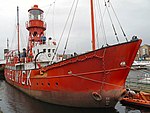River Tawe

The River Tawe (; Welsh: Afon Tawe [ˈtau.ɛ]) is a 30 miles (48 km) long river in South Wales. Its headwaters flow initially east from its source below Llyn y Fan Fawr south of Moel Feity in the Black Mountains, the westernmost range of the Brecon Beacons National Park, before the river turns south and then southwest to its estuary at Swansea. Its main tributaries are the right bank Upper and Lower Clydach Rivers and the Afon Twrch. The total area of the catchment is some 246 km2 (95 sq mi). The Tawe passes through a number of towns and villages including Ystradgynlais, Ystalyfera, Pontardawe, and Clydach and meets the sea at Swansea Bay below Swansea. The Tawe Valley (Cwm Tawe in Welsh) is more commonly known as the Swansea Valley. Ownership of the riverbed was granted to the Duke of Beaufort in the 17th century by Charles II resulting in exclusive mineral and fishing rights, which is extended as far as requiring permission and payment for bridges which are built over it. This was last exercised in 2008 when Swansea Council was required to pay £281,431 to the estate, as revealed by a Freedom of Information request.
Excerpt from the Wikipedia article River Tawe (License: CC BY-SA 3.0, Authors, Images).River Tawe
Lock, Swansea Waterfront
Geographical coordinates (GPS) Address Nearby Places Show on map
Geographical coordinates (GPS)
| Latitude | Longitude |
|---|---|
| N 51.616666666667 ° | E -3.9333333333333 ° |
Address
Lock
Lock
SA1 1WG Swansea, Waterfront
Wales, United Kingdom
Open on Google Maps








